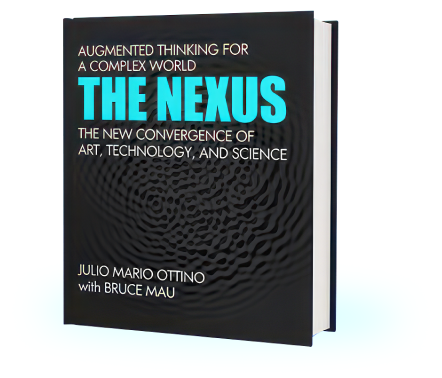The praise currently bestowed on what AI can do makes it hard to think clearly about what AI — at least in its current form — cannot do.
One area of overreach is in the arts. Claims about “autonomous machine artists” divert attention from the more productive issue of human-machine collaboration for artistic creation.
Could AI have invented cubism? Not a crazy question, given how much AI seems to have penetrated everything, including art.
Asking art historians, critics, and gallerists if an AI generated painting could have been done by abstract painter Mark Rothko misses the point in exploration of creativity. Rothko has been done, and that’s the end of it. The legal challenges to AI companies for use of copyrighted images reinforces the point of AI outputs as pastiches and strengthens the argument that AI is not art.
The reality, however, is that AI-generated art is with us. And with it the pro and con passions it has aroused.
There is no doubt that AI-driven tools will be embraced by some artists and ignored by many others. Man Ray, the American-born, French-based artist, embraced photography. Many painters recoiled at the invention of the camera, which they saw as a defilement of human artistry. The French poet Charles Baudelaire called photography “art’s most mortal enemy.” The change was vertiginous. Photography went from a period 100 years ago, where one might have a handful of pictures taken over the course of your lifetime, to the present where people have literally hundreds of thousands of pictures intended just for themselves. And in the meantime, photography became recognized as art.
Now, more than ever, artists are earlier adopters of technology. But, at the same time, even today, there are artists who prefer to take pictures without a camera. The real question is, can AI generate what I call a break-with? The question applies to art and to everything else.
The term breakthrough is undoubtedly familiar. But when researching the ways that art, technology, and science intersect, the outputs it has produced, and what this intersection may produce in the future, I coined the term break-with to describe things that are, in terms of originality, a step above standard breakthroughs.
Breakthroughs represent a sudden development and a new insight. The term itself suggests something that pierces the boundary of a domain of knowledge and enlarges the domain. A break-with is a step above a break-through. A break-with is conceptual advance that breaks with ideas that were at the very center of old way of thinking. In extreme cases new domains form and a new order sets in. The old way of thinking becomes useless or outmoded when the new way kicks in.
Somewhat ironically, AI itself had its own “break-with”. Today’s machine learning-based AI is itself a paradigm shift, for this is not how the AI community in mid 1970s imagined AI. The goal then was to understand how humans thought. AI grounded in machine learning is, to some, contrary to the very concept of how to mimic “intelligence”, anathema to the very concept of how to implement human cognition in machine form.
But the new AI works. AI will penetrate art. And everything else.
The question is: What is AI capable of? Could AI break from what has been done in the past to create genuinely original modes of expression? I would argue that any machine analysis of the entire history of physics prior to 1900 would not have been able to come up with quantum mechanics or relativity. Why? Because the new way of thinking violated the very cornerstone of prior knowledge. Energy being discontinuous? Space and time being equivalent? Could any of those radical concepts have emerged by looking backwards?
And how about more everyday things? How would AI design a new chair? Every designer, and many architects, has felt the compulsion to design a new chair. What does it take for a newly designed chair to become part of a canon, for a chair to become iconic? Only one requirement: It cannot be derivative. Which brings the obvious point: Could an AI design break new ground if it is based on all previous designs?
Another hypothetical example: It is 1970 and AI as we know it is already with us. You are an architect based in LA designing hotels with big atriums. You want ideas and you ask AI for help. AI knows everything that has happened with buildings in LA, the US, and the world. And let’s say this knowledge covers the last two hundred years and you want one hundred ideas. The question is: Could any of those hundred ideas anticipate what John Portman did in the mid-1970s, making elevators visible in atriums or putting them outside the building?
Which brings us back to the original question: could AI have come up with cubism? One could argue that the history of art – especially modern and contemporary art — is a succession of breaking assumptions or break-withs.
The discussion will continue, with extreme viewpoints on the pro and con sides: That AI can never produce art, that art is inherently human; that AI is appropriating the work of existing artists, that one day AI will replace artists, and everything in between. There is little doubt that AI tools will be adopted. Graphic novels, movies, and much more will be invaded by AI. Humans and AI will work together. Not everything will be good. Progression is not progress.
One should also recognize AI’s limitations. Today’s machine learning-based AI mines the past. Left to its own devices it creates pastiche. Maybe even great pastiche, but in the end, it is comingling and recombination of past creations. The very thing that makes AI so effective is also its limitation.
